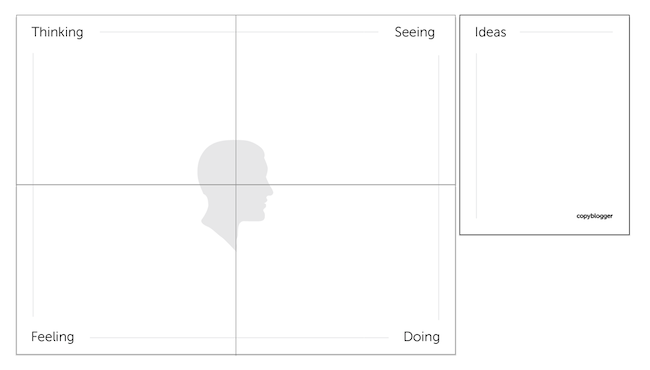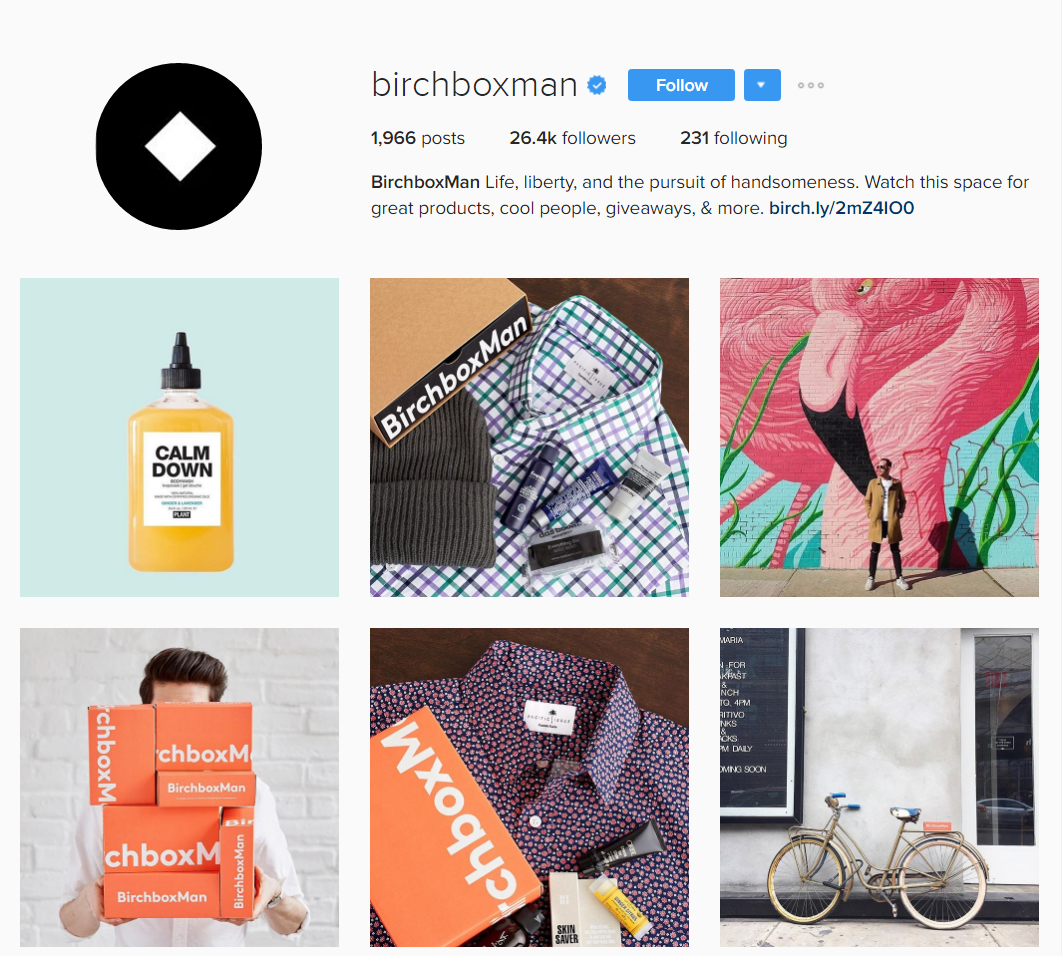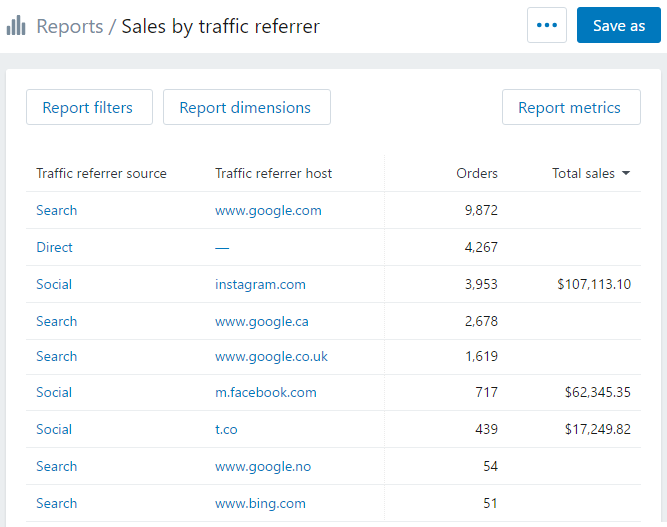The business case for Instagram ecommerce is strong.
Advertising on Instagram is exploding. And the tools for selling on Instagram via Shopify have arrived.
Unfortunately, for high-volume merchants, all that paid action rests on an organic Instagram ecommerce strategy that can feel like a total mystery. Some sort of left-brain act of artist divination.
Good news … it’s not.
In this article, we’ll pull back the curtain and reveal five commandments that govern organic Instagram ecommerce strategy. After all, this is the foundation upon which everything else stands or crumbles.
1. Thou Shalt Know Thy Instagram Audience
Before posting anything, you have to know who you’re posting for.
Odds are you already have buyer personas for your store. If not, Richard Lazazzera’s How To Build Buyer Personas For Better Marketing can help immensely. After diving deep into the sea of demographics, Lazazzera surfaces this example of “Alex” for a fictitious company:

While vital, this sort of persona is typically as far as most of us go. It nails personal characteristics like age, interests, and income, but only touches lightly on psychological elements like “Motivation” and “Concerns.”
On Instagram, where emotions and relationships rule, you need to go one step further.
To do that, take each of your personas over to Copyblogger’s “empathy map.” There, Demian Farnworth offers a four-fold approach for “crawling inside your customer’s head.” The idea is to first identify the “feelings, thoughts, or attitudes” of your buyers and then to develop “vicarious” experiences driven by content:

The best way to flesh out your personas with the empathy map is to follow the biggest influencers in your niche and pay attention to what resonates and sparks a response. Even mundane elements like knowing your target followers’ geographical location help so you can post during the times they’re online.
The golden rule of targeted marketing is getting niched.
That’s all the more true on Instagram. Major brands like Birchbox, Starbucks, and Old Navy each use separate accounts to segment geography and demographics.


Your approach to Instagram — whether you’re just getting started or already up and running — has to revolve around the people you’re going to reach, just like any powerful marketing plan:
- Demographic personas
- Empathetic personas
- Segmented accounts
2. Thou Shalt Share Content Tailored to Thy Brand
Instagram’s love of brands and products makes it perfect for ecommerce. In fact, L2’s Instagram Report found:
Sixty-five percent of the best-performing posts on Instagram feature products, while 29% feature a brand ambassador or influencer.
When deciding what to share, the takeaway is clear: never be afraid to feature products.
However, not everything should be a picture or video of your product.
You’ll need to define from the outset what other aspects of your business or personality you’re willing to share. Social causes, motivational posts, and behind-the-scenes visuals of you and the people who make your business run all bring out your human side.
As Foundr Magazine — who grew their following from 0 to 10,000 in just two weeks and now have 1.5 million followers — points out:
On Instagram, engagement is king.For best results, we found images that trigger an emotion or questions that elicit some thought work really well.
Alternatively, you can also mix the two approaches, as Johnny Cupcakes does:
In keeping with your profile, develop a consistent visual theme.
If you already have brand guidelines, follow them. If not, consider using the same fonts and similar filters on your images.
Whether you’re a professional photographer or not doesn’t matter. The first four apps in Shopify’s 13 Essential Instagram Tools for Social Media Marketing will guide you beyond the defaults.
What’s crucial is consistency:


Divide your content plan along these lines to start:
- Product posts
- Non-product posts
- Mixed posts
How often should each appear in your rotation? That’s where we’ll turn next.
3. Thou Shalt Post Regularly on Instagram
Adhering to an editorial calendar is the only way to head off one of the mistakes guaranteed to derail your ecommerce success on Instagram: inactivity.
The good news is it doesn’t take much to be profitably active. In Buffer’s words:
“Major brands post an average of 1.5 times per day to Instagram. There’s no drop-off in engagement for posting more, provided you can keep up the rate of posting.”
Other estimates put that number a bit higher, but everybody agrees ...
One to three times a day is ideal.
There are also a host of best practice guides like CoSchedule’s compilation of 16 different studies:

Next, go back to the three content types from the last commandment — product, non-product, and mixed — and arrange your calendar around a 10:1:1 ratio.
For every 10 product posts, feature one non-product post and one mixed post.
4. Thou Shalt Track the Metrics that Matter on Instagram
Organic ROI, however, is notoriously difficult to measure.
That’s because — without links to click in the vast majority of posts — much of what’s considered “vanity” on other platforms matters on Instagram. Things like followers, likes, comments, and bio clicks.
Think of these metrics as your Instagram sales funnel:
- Top-of-funnel: followers and likes.
- Middle-of-funnel: comments (i.e., engagement).
- Bottom-of-funnel: link tracking on your bio through bit.ly or a UTM as well as unique coupon codes in your posts themselves.
Combined, these metrics tell you the health of your Instagram ecommerce strategy and where you need to improve.
From there, using the “Sales by traffic referrer” report delivers the value of Instagram followers once they make it onsite.

This structure means native metrics are a great starting point. After the rollout last year, you can track things like follower demographics, top posts, and impressions.

To hone your strategy, Simply Measured offers all-in-one social analytics that includes Instagram. The Iconosquare platform is built explicitly for Instagram and includes your internal analytics, engagement stats, details on your communities, competitor benchmarking, and hashtag tracking:

With your audience, content, calendar, and analytical foundations set, you might be tempted to think we’re set. Not quite …
5. Thou Shalt Not Commit the Two Cardinal Sins on Instagram
Last, a couple of words of caution.
Number one: do not launch an Instagram ecommerce strategy because you’re “supposed” to.
Despite all the benefits, Instagram may not be right for your business. Ask these questions before launching your brand on Instagram. Four or more no’s should be considered a deal breaker:
- Is my product easily represented visually?
- Can I showcase my industry with images and videos?
- If not, am I willing to invest the energy and brainpower to represent my company creatively?
- Am I comfortable sharing more than my product?
- Am I willing to share about myself, my employees, our work lives, and our philosophy?
- Can I invest the time?
- Am I willing to be authentic, get creative, learn, and keep improving?
Instagram is a phenomenal platform to engage, market, and advertise on, but it is still just one of the platforms you can use. Consider your content strategy, and then, if you decide to use Instagram, take care to apply it well.
Number two: do not harass your followers.
The challenge for any company on social media is actually to connect with customers and leads. Success hinges on going native and adapting your product and brand to fit the medium.
If your industry doesn’t naturally lend itself to Instagram’s visually centric format, then you’ll have to put in extra effort to present the sides of your company that is visual.
If your product is photogenic, you run the opposite risk: turning your feed into one long, constant advertisement. Continually seek the right balance of product promotion and audience engagement; even better, combine the two:
Your Instagram Ecommerce Strategy: From Mystery to Method
Success on Instagram isn’t dark magic.
Creating an organic Instagram ecommerce strategy comes down to just five commandments:
- Thou Shalt Know Thy Instagram Audience
- Thou Shalt Share Content Tailored to Thy Brand
- Thou Shalt Post Regularly on Instagram
- Thou Shalt Track the Metrics that Matter
- Thou Shalt Not Commit the Two Cardinal Sins
In everything, seek to combine your products and your passions. Be authentic; once you’ve developed a rhythm, style, and connection, stick to ‘em.
Beauty trumps all on Instagram. Sometimes that means professional models and photo shoots. But far more often it means your intern, their smartphone, and just one or two tools to get the filters right.
Trust in beauty to carry your message and thou shalt succeed.
Read more
- How to Drive High-Intent Ecommerce Visitors Toward Buying and Eliminate Anything That Stands in the Way
- How to Reduce Fears and Bring Clarity to the Checkout
- The Science of Impulse Purchases: How to Encourage Your Customers to Buy More on the Fly
- How Ecommerce Teams Get Buy-in To Sell More
- Shopify Flow Templates you can use During COVID-19
- Customer Retention: How to Turn New Shoppers into Repeat Customers
- The Master Guide to Google Channel
- 5 Ways Brands Grow Revenue Using Text Message Marketing
- Guest Checkouts: Definition, Benefits, and Best Practices
- One-Page Checkouts: Definition, Benefits & Optimizations


